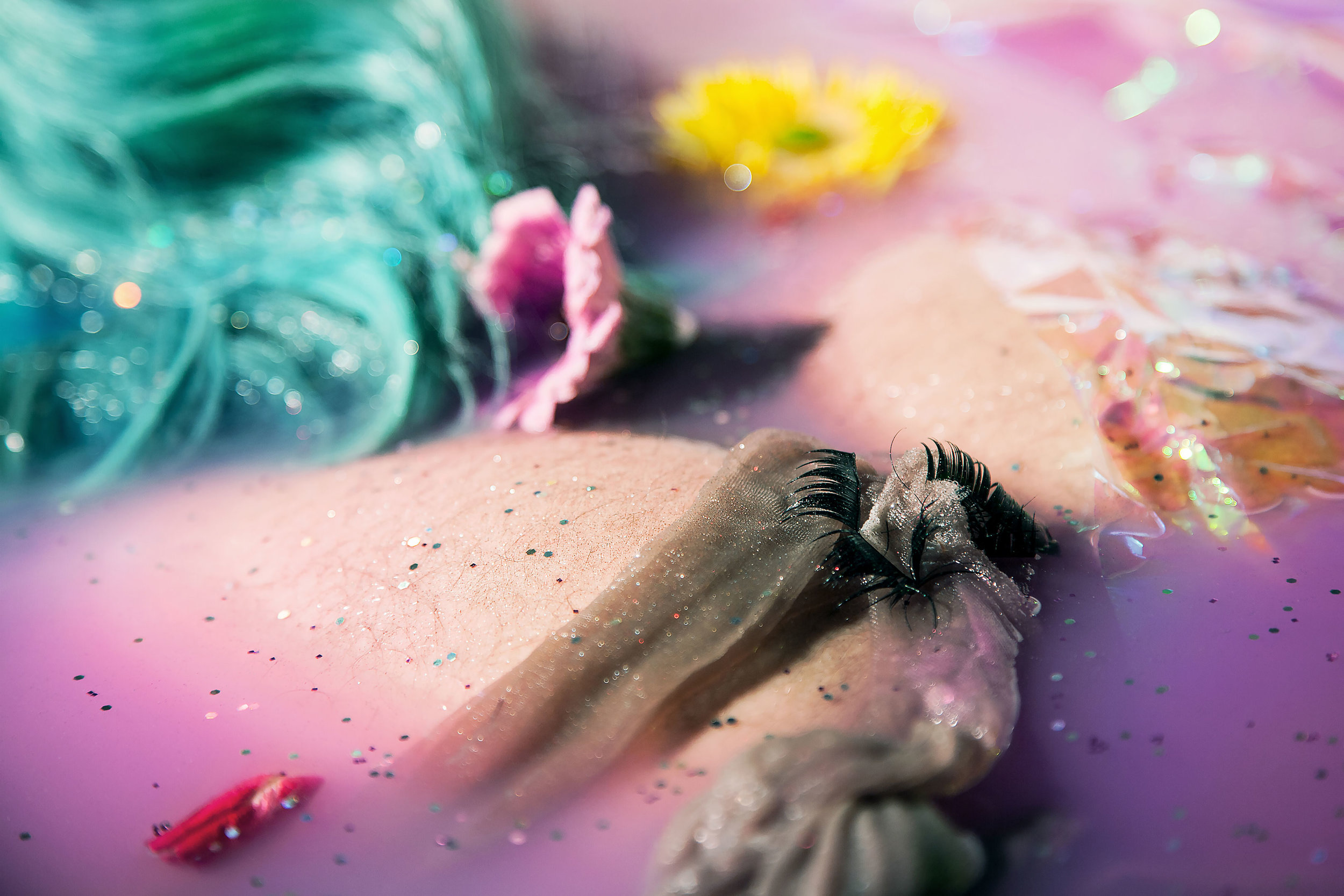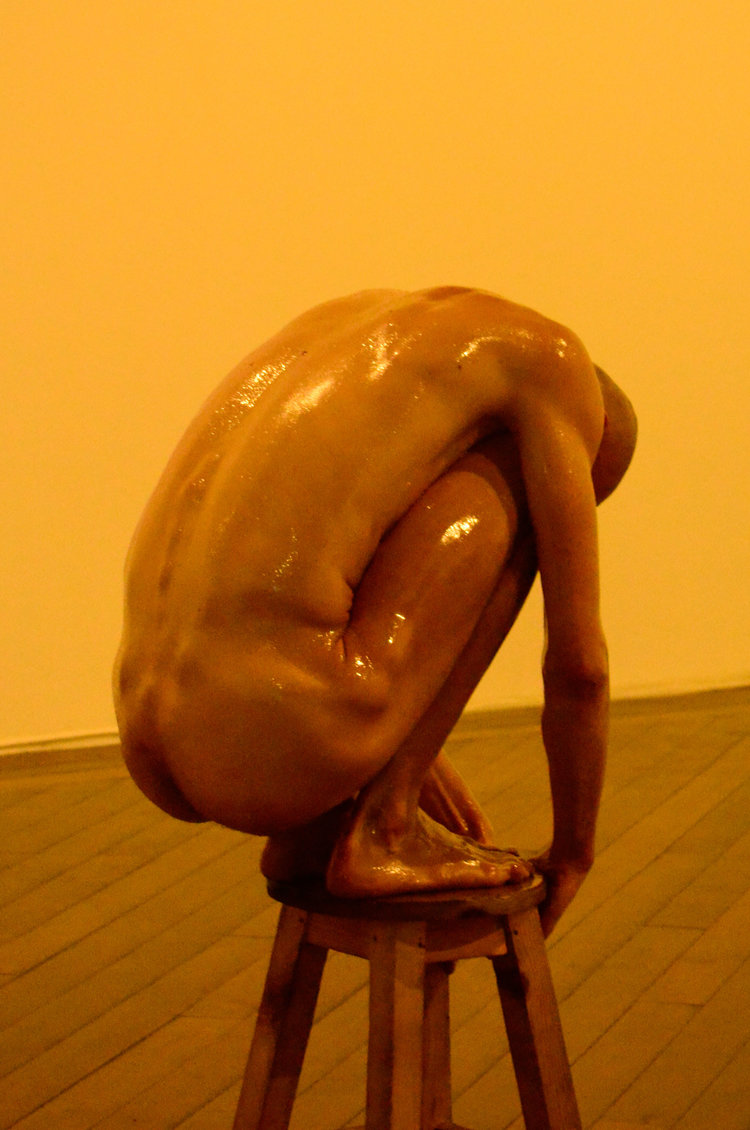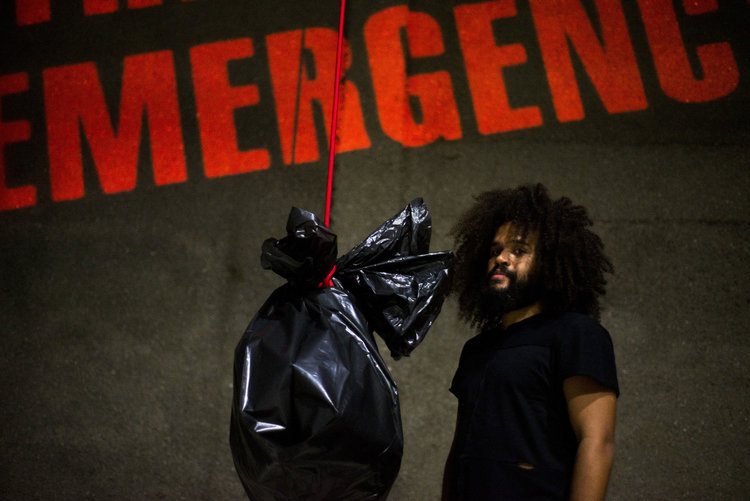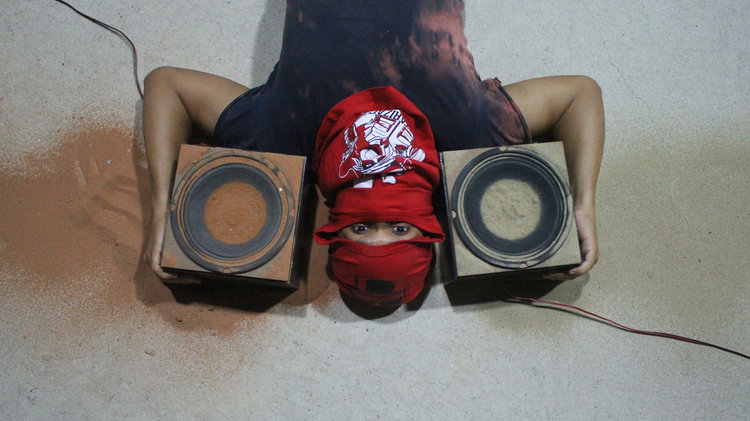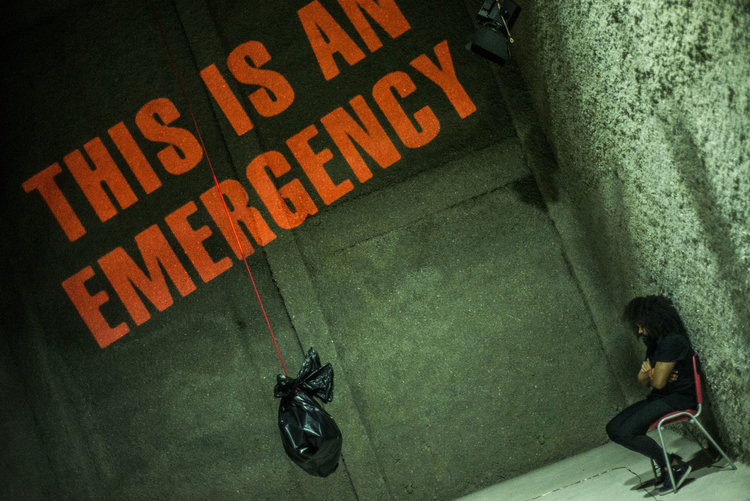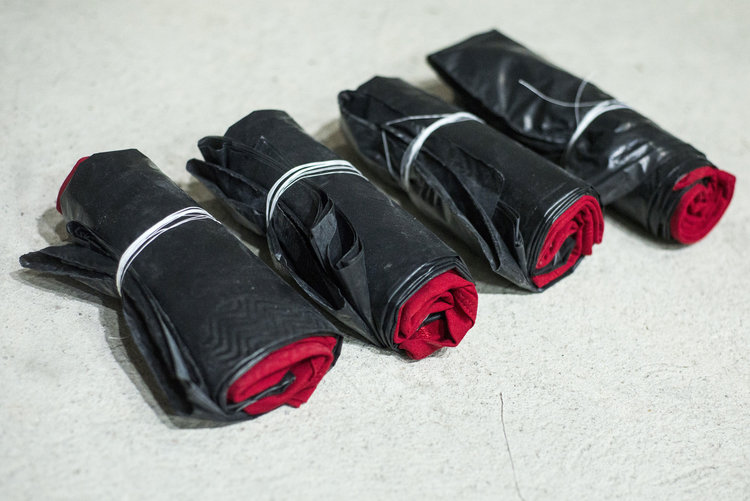Donnerstag
11.4.2019
Tanzsalon – Archive meets artists
Using a cultural heritage
Conversation between Brigitta Luisa Merki and Rahel Leupin (in English)
Das Schweizer Archiv der Darstellenden Künste (SAPA) präsentiert gemeinsam mit dem Tanzhaus Zürich zum vierten Mal eine Begegnung mit einer Künstlerpersönlichkeit und deren Video-Archiv. Brigitta Luisa Merki übernahm 1994 die Künstlerische Leitung von Flamenco en route. Vorangegangen war eine lange Zusammenarbeit mit den beiden Flamenco-Künstlern Susana und Antonio Robledo. 2004 erhielt Brigitta Luisa Merki den Hans Reinhart Ring für ihre innovative Arbeit, welche auf lebendiger Tradition und Kontinuität basiert. Im Rahmen von zürich moves! befragt sie die Kulturwissenschaftlerin Rahel Leupin zum Thema Kulturelles Erbe. Archivmaterial des SAPA wird gezeigt und das Publikum ist eingeladen, mitzudiskutieren.
The Swiss Archive of Performing Arts (SAPA) presents in tandem with the Tanzhaus Zurich for the fourth time an encounter with artists and their video archive. Brigitta Luisa Merki took over the artistic direction of the company Flamenco en route in 1994, after a long collaboration with two major Flamenco artists Susana and Antonio Robledo. 2004 she was awarded with the Hans Reinhart Ring for her innovative work based on living tradition and continuity. For the festival zürich moves! she will be interviewed by the cultural scientist Rahel Leupin about the use of a cultural heritage. Video archive from the SAPA will be shown and a discussion engaged with the audience and artists of the festival.
About
Die Stiftung SAPA, Schweizer Archiv der Darstellenden Künste, sammelt, dokumentiert, archiviert und verbreitet in der Schweiz produzierte, mit der Schweiz in Verbindung stehende oder für sie bedeutende Werke aus dem Bereich der Darstellenden Künste.
Credits
Photo ©Alex Spichale
DO 11.4. um 18.00
75 min
Tanzhaus Zürich
Valerie Reding
why don’t you do right
interaktive Langzeit-Performance / long-durational interactive performance im Rahmen von / in the frame of www.lasttango.info/sarah-margnetti-megan-rooney
Ich erinnere mich ganz genau an das erste Mal, als ich Drag gemacht habe: Ich zog meine zwölf Zentimeter hohen Hacken an, quetschte mich in einen giftgrünen Plissé Minirock und ein fuchsiarotes, trägerloses Top, legte meine platinumblonden Haare ein und benutzte den einzigen Lidschatten, den ich damals besaß - ein schimmerndes Hellblau - um dem Look den letzten Touch zu geben. Ich wollte all diesen Jungs zeigen, dass ich intelligent sein und Bombe aussehen kann - und gleichzeitig für sie unerreichbar bin. Ich atmete tief ein und öffnete die Tür… Ich war 13 Jahre alt und ging so in meine Mathematikklasse im Gymnasium.
„Wir werden nackt geboren, alles andere ist Drag“, meinte RuPaul und argumentierte dann, dass weder cis- noch trans-Frauen beim Drag Race teilnehmen dürfen, da „Drag das Gefühl von Gefahr und Ironie verliert, sobald es nicht von Männern gemacht wird“. Wenn weibliche* Körper Femininität performen, wer bestimmt wer an wen eine Hommage macht, wer das Recht auf Subversion hat und schliesslich: wer eignet sich hier wirklich Femininität an und von wem?
I remember very vividly the first time I did drag: I put on my five inch heels, squeezed myself into a chartreuse green pleated miniskirt and a bright fuchsia strapless top, curled my platinum blonde locks and used the only eyeshadow I owned - a shimmery pastel blue - very generously on my eyelids to complete the look. I wanted to show all these boys that I can be intelligent and look smoking hot - and totally unreachable for them. I took a deep breath in and opened the door… I was 13 years old and walked into my mathematics class at college.
“We’re born naked, everything else is drag”, RuPaul said and then argued, why no cis- nor trans-women should be allowed on Drag Race, because “drag loses its sense of danger and its sense of irony once it’s not men doing it”. When fem bodies perform femininity, who is to say who is paying tribute to whom, who has the right to subverting what and ultimately: who is really (re-)appropriating femininity from whom?
About
Valerie Reding works at the intersection of performance, dance, photography and video. Exploring the potential of vulnerability, transformation and elements of drag, she inquires gender roles and norms of bodies, identities and sexualities. Her work has been shown in galleries such as Commonwealth & Council and FORMA Arts Contemporains, at festivals like zürich moves!, The Queer Biennial II, La Fête du Slip and Porny Days as well as at theaters like Tanzhaus Zürich, Arsenic and CounterPulse. www.valeriereding.com
Credits
concept, performance, costume and set design Valerie Reding technical support David Baumgartner dramaturgical advisor Marc Streit Assistance Nico Dubosson
Photo ©Valerie Reding
DO 11.4. um 20.00
180 min
Last Tango
Victor Oliveira
Pôr Nu (Put Naked)
im Rahmen von / in the frame of www.lasttango.info/sarah-margnetti-megan-rooney
Pôr Nu ist eine körperliche Begegnung zwischen Performer und Zuschauenden mit dem Ziel, einen gemeinsamen Zustand zu finden und Zusammengehörigkeit zu erleben. In unmittelbarer Nähe exponiert Victor Oliveira seinen Körper, dessen Löcher und Genitalien. Post-Porno-Körper, Körperobjekt, begehrender Körper. Er steht dabei auf einem hölzernen Stuhl, sein Körper ganz mit Öl eingeschmiert. Der Körper ist sich seiner fleischigen Konstitution bewusst, öffnet und schliesst seine Löcher, produziert Schweiss, kommt zum Höhepunkt, atmet aus und beschafft sich Erleichterung. Pôr Nu ist ein Schweisskunstwerk für einen Post-Porno-Körper, ein Körperobjekt, einen begehrenden Körper, das sich mit den eigenen Störungen, Grenzüberschreitungen und mit Cross-Gender auseinandersetzt.
Pôr Nu is a bodily encounter between the performer and the audience. It proposed to find a common state and experience toghetherness. The actions proposed in sheer proximity expose the body, its holes, and genitals. Post-porn-body, Body-object, Desiring-body. The performer Victor Oliveira stands on a wooden stool, with the body fully covered in oil. Aware of its fleshy constitution, the body opens and close holes, produces sweat, spurs, exhales, works on all kinds of releases. Pôr Nu springs as a sweat art piece, dealing with its own disorders, its own transgressions and experiencing gender-crossings.
About
Victor Oliveira (Brazil, *1994) is an artist, researcher and performer interested in the power of the body to queer normality. Among his creations, stand out: Pôr Nu at Greve Geral (2018); Missa do Corpo at II Festfic (2017); Mycobacterium at the Seminar Trans-Incorporados at the Rio Art Museum (2017). Oliveira is currently pursuing his degree in Dance at the Federal University of Rio de Janeiro and is a member of Improvável Produções Artísticas, a contemporary Dance company by Marcela Levi e Lucia Russo.
Credits
Conception, creation and interpretation Victor Oliveira Production Jorge Soledar Creation space Lab_Performance, EBA - UFRJ Acknowledgments Vinicius Oliveira, Andrea Martins, Idris Bahia, Mario Netto, Uira Clemente, Rafael Amorim, Jorge Soledar, Felipe Ribeiro, Eleonora Artsenky, Tais Almeida, Lucas Fonseca, Rogeria Feminino, Filipe Nantel, Yuri Dias, Juliana Ribeiro Whaner (Collective Quadro Vivo), Nadam Guerra, Cande Costa, Cecilia Cotrim, Rayan Pires Sarmento, Thaina Farias, Improvável Produções Artísticas, Phabrika das Artes, Z42 Arte Contemporanea and Espaco Montagem
Photo ©Silvana Marcelina
DO 11.4. um 21.00
30 min
Last Tango
im Rahmen von / in the frame of www.lasttango.info/sarah-margnetti-megan-rooney
Gente de lá (Leute von dort) ist eine schwarze, transversale Arbeit aus den Vororten des nordöstlichen Brasiliens, die Rassenungleichheiten auf poetische Weise denunziert und gleichzeitig die soziale Konfrontation sucht. Sie bringt ihre eigenen Dringlichkeiten hervor, vermischt das Politische und das Persönliche, richtet ihren Blick aber auch auf verstörende Themen wie das Gefängnissystem, Massenmorde an der schwarzen Bevölkerung oder die Favelakultur. Die Bewegung als Antwort auf eine zufällig ausgerichtete Waffe gehört zu den Haupttänzen des urbanen, schwarzen Favelakörpers. So entsteht die Notwendigkeit zu tanzen, verschiedene Arten des Widerstandes zu erproben und Territorien zu überdenken, während stets mit den Gewalttaten der meist räumlichen Rassensegregation gerechnet werden muss. Mit Gente de lá richten wir die Waffe auf die Gegenseite – und wir sind bereit, abzudrücken!
Gente de lá (People from out there) is a black, transversal work which comes from the outskirts of Northeast Brazil to, at once, poetically denounce racial inequalities and propose social confrontations. While Gente de Lá renders its own urgencies and mingles politics and subjectivities, it also regards disturbing issues such as the policies of the prisional system, the mass murders of black population, and the favela culture. Moving under the random spin of a gun has been the major dance of a urban-black-favela body. Thus, the need to dance Gente de Lá and connect different means of resistance, rethink territories, and reckon with violences of racial-often-spatial segragations. Gente de lá becomes our way to point back and have the trigger ready to be pulled!
About
Gadelha is a Brazilian artist, developer of the Afrontamento (Confronting) Platform. His interests range from Performance Art to video, installation works, and imersive processes in art and technology, specially soundscapes. Gadelha collaborates also with collectives of artists and grassroots organizations concerned with human rights issues, peripherical cultures, and black youth. His current project, Gente de Lá has been awarded the Rumos Itau Cultural prize and Premio Funarte de Artes Visuais.
Credits
Conception, dramaturgy, and sound design Wellington Gadelha Music Production Dj Pedro Ribeiro Set design Wellington Gadelha, Emanuel Oliveira Dramaturgical collaborators Luiz de Abreu, Leonardo França, Thereza Rocha, Andréa Bardawil Graphic Design Diogo Braga Production Plataforma Afrontamento Partnerships Trincheira, Escola Porto Iracema das Artes, Galpão da Vila Funded by Rumos Itaú Cultural
Videos and Photo ©Priscilla Sousa, Luiz Alves



